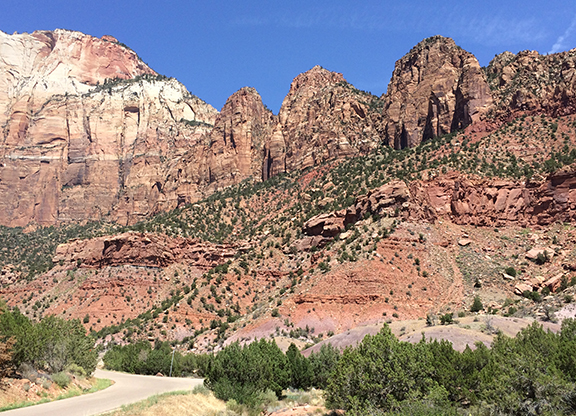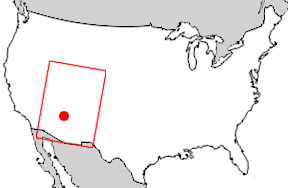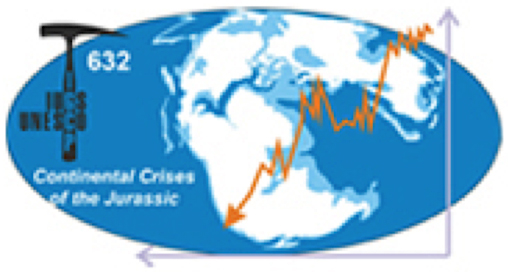IGCP-632
Introduction
Fieldtrip
Abstracts
Fees
Invitation Letter
Registration and Payment
Getting
to Flagstaff
Hotels
|
|

|
The 5th Symposium
The 5th Symposium of IGCP 632 is planned for the Sunday and Monday of
October 1 and 2, 2017 at the Museum of Northern Arizona in Flagstaff,
AZ, USA. Flagstaff sits near the south end of the Colorado Plateau,
which has spectacular exposures of largely continental Triassic and
Jurassic sequences. Flagstaff is also close to the famous Grand Canyon
that cuts down to a depth of over 1.6 km deep along a 433-km-long
course. This symposium will focus on, but is not limited to,
continental events and processes in the Jurassic world and their
relation with the marine record along transects from the Jurassic
tropics to the poles, including the Triassic-Jurassic, Toarcian, and
Jurassic-Cretaceous events.
The overall scope of IGCP 632 focuses on the global aspect of Jurassic
climate, biota and the correlation between terrestrial and marine
ecosystems. It is supported by the International GeoScience Program of
UNESCO, along with the IUGS.
|
|
Above: Black
Canyon near the
south entrance to Zion National Park. Purple units at the base of the
exposures are fluvial Late Triassic (Norian-Rhaetian) Chinle Formation.
Overlying is the slope-forming fluvial and lacustrine ?latest
Triassic-Early Jurassic (?Rhaetian-Hettangian-Sinemurian) Moenave
Formation. The small cliff in the middle is the fluvial Springdale
Sandstone Member of the Early Jurassic (Sinemurian-Toarcian) Kayenta
Formation, the fluvial and lacustrine remainder of which forms the
overlying slope. The steep cliffs in the background are eolian
sandstones of the Early-?Middle Jurassic (Toarcian-?Aalenian) Navajo
Sandstone. The Navajo Sandstone comprises one of the largest sand-sea
formations in the world.
|
Fieldtrip
The pre-meeting field trip (September 28-30) will examine
spectacular outcrops of largely continental Triassic-Jurassic boundary
through Jurassic-Cretaceous sections on and around the Colorado Plateau. We will look at sites that exemplify the various formations that provide critical time control.
|
Abstracts
Abstract deadline was August 1, 2017, but abstract s can still be
accepted on a linited basis until September 1.
Official Language is English
Abstract can be no more than 2500 characters, not including spaces
Title can be no more than 200 characters, not including spaces
No figures
Please send the abstracts as a Microsoft Word document to:
Paul E. Olsen
polsen@ldeo.columbia.edu
Use a subject line of “abstract for IGCP 632 – 5th”
|
Fees
Registration: $500 USD
(includes abstract book, meeting, lunches during meeting and banquet)
Fieldtrip: $525 USD (three days)
(includes guidebook, transportation, lodging [double occupancy, singles
extra], bag lunches)
All costs not listed in the above will be the responsibility of the
participants, including lodging for the symposium.
We will provide recommendations for transportation to and from the
airport as well as a list of possible hotels.
|
Invitation Letter
An invitation letter will be sent to you upon request to: polsen@ldeo.columbia.edu
|
Registration and Payment
Payment: Payment may be made using credit cards through EventBright. Click here to pay (https://www.eventbrite.com/e/5th-symposium-of-igcp-632-tickets-36651305040).
Payment can also be made on site but only in cash United States Dollars (USD)
|
Getting
to Flagstaff and the symposium and the fieldtrip
Fieldtrip departure and
return locations: The field trip will depart from and return to
the Musum of Northern Arizona at 8:00 AM on September 28 and end on
September 30, and therefore if you are planning on going on the field
trip you must arrive on September 27. Further details to be announced
shortly.
Symposium: The
symposium will begin at 9:00 AM on October 1 and end on October
2. Therefore if you are planning on just going on to the
symposium, you should arrive on September 30. It may be possible to
leave the evening of October 2 (especially if you are driving), but
probably easier to
depart on October 3. Further details to be announced shortly.
Flagstaff:
It is
possible to fly directly into the Flagstaff, Arizona airport (Flagstaff
Pulliam Airport: FLG). It is possible to fly directly into the
Flagstaff, Arizona airport (Flagsaff Pulliam Airport: FLG). American
Airlines and several other airlines have flights from Phoenix Arizona
International Airport (Phoenix Sky Harbor Airport: PHX). Thus, if you
wish to fly directly to Flagstaff, you should have a connection through
Phoenix.
Another option is to fly into Los Angeles and take the the train
(Amtrak) from Union Station. It takes abour 10:30 hr to get from Los
Angels by train.
Some participants may want to rent a car in some other major city
within a few hours drive of Flagstaff and drive on their own. Las
Vegas, Nevada, Salt Lake City, Utah, and Albuquerque, New Mexico are
good options and many international flights arrive there.
Approximate driving
times to Flagstaff are as follows:
Las Vegas, Nevada to Flagstaff: 4:30 hours
Albuquerque, New Mexico,: 5:00 hours
Salt Lake City, Utah to Flagstaff: 8:30 hours
|

|
Left:
Map of United States. Red dot is location of Flagstaff. Red box is map
below.
|
|

|
Getting from Flagsaff
Pulliam Airport (FLG) to your hotel
We
will arrange transportation from and to the airport, via a van driven
by one of the field trip leaders. You must tell us your arrival and
departure times in advance. Send to Paul Olsen: polsen@ldeo.columbia.edu
|
Hotels
Field Trip
September 27: Arrival and Field Trip
A block of rooms has been reserved (double occupancy) September 27 at the Drury Inn & Suites Flagstaff (300
S Milton Rd, Flagstaff, AZ 8600. Phone: (928) 773-4900) If you have
made other arrangements please email P. Olsen
(polsen@ldeo.columbia.edu) as soon as possible. Cost is included in
Field Trip Fee.
September 28: Field Trip
A block of rooms has been reserved (double occupancy) at the Quality Inn, Red Cliffs (912 W Red Cliffs Dr, Washington, UT 84780. Phone: (435) 673-3537). Cost is included in Field Trip Fee.
September 29: Field Trip
A block of rooms has been reserved (double occupancy) at two hotels in Moab, Utah, because of limited availability.
1) Moab Valley Inn (711 S Main St, Moab, UT 84532. Phone: (800) 831-6622).
2) Hotel Moab Downtown (182 S Main St, Moab, UT 84532: Phone: (435) 259-7141)
Cost is included in Field Trip Fee.
September 30: End of Field Trip
Symposium: September 30, October 1 – 2
Rooms are reserved at the Drury Inn & Suites Flagstaff
(300 S Milton Rd, Flagstaff, AZ 8600. Phone: (928) 773-4900), double
occupancy. Cost is $88.25 per night per room, per person. That is a
total of $264.75 for 3 nights that can be paid at arrival in cash,
please.
Arrival is September 30, departure October 3.
Availability is extremely limited in Flagstaff, but if you have made
other arrangements and want to keep them or what a single room (at
176.5 / night at the Drury Inns & Suites) please email P. Olsen ( polsen@ldeo.columbia.edu) as soon as possible.
PLEASE NOTE, THE DEADLINE FOR BOOKING YOUR ROOM AT THE DRURY INNS &
IS SEPTEMBER 22. IF YOU WISH OTHER ARRANGEMENTS YOU MUST TELL P. OLSEN ( polsen@ldeo.columbia.edu) BEFOR THAT DAY.
|
Other Links
IGCP 632
(http://www.igcp632.org/)
International
GeoScience Program
(http://www.unesco.org/new/en/natural-sciences/environment/earth-sciences/international-geoscience-programme/)
IUGS
(http://www.iugs.org/)
Museum of
Northern Arizona |
IGCP 632
project leaders: Jingeng Sha (China), Vivi Vajda (Sweden), Paul E.
Olsen (USA), Emma Msaky (Tanzania), Mohammed Et-Touhami
(Morocco), Olena Shevchuk (Ukraine), Hamish Campbell (New Zealand),
Wolfram M. Kuerschner (Norway).
|



